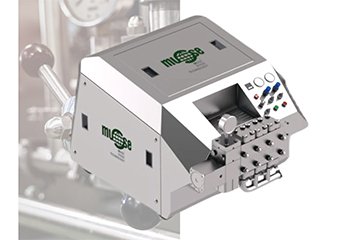
Homogenizers: Working Principle, Types, and Advantages
What is Homogenization?
Homogenization is a mechanical process that reduces the size of fat globules in milk and dairy products to make the product more stable, uniform, and extend its shelf life. This process prevents fat separation (creaming) from the serum phase and improves the product’s texture.
Homogenizers force milk under high pressure (50–300 bar) through a narrow gap (homogenization valve), creating turbulence, cavitation, and shear forces. This results in:
Fat globules (initially 3–15 µm) being reduced to 0.1–2 µm in size.
Proteins (casein and whey) adsorbing onto the fat surface, forming a stable emulsion.
Increased viscosity and improved mouthfeel.
a) High-Pressure Homogenizers
The most commonly used type.
Operates with a two-stage system:
First stage: High pressure (150–250 bar) breaks down fat globules.
Second stage: Lower pressure (30–50 bar) prevents reagglomeration of small globules.
Examples: APV Gaulin, Tetra Pak homogenizers.
b) Ultrasonic Homogenizers
Uses high-frequency sound waves to break down fat globules.
Energy-efficient but limited in industrial-scale applications.
c) Membrane Homogenizers
Controls particle size using microfiltration or nanoporous membranes.
Particularly used in probiotic dairy products.
Pasteurized Milk: Extended shelf life, prevents cream layer formation.
Yogurt: Smoother texture, reduced syneresis (water separation).
Cheese: Uniform fat distribution, more efficient curd formation.
Ice Cream: Smaller fat globules provide a creamier texture.
5. Critical Parameters in Homogenizer Selection
| Parameter | Effect |
|---|---|
| Pressure | High pressure (200+ bar) is ideal for UHT milk. |
| Temperature | 50–70°C reduces viscosity, improving efficiency. |
| Flow Rate | Must be optimized for continuous processing. |
| Valve Design | Ceramic valves are wear-resistant. |
Fat globule agglomeration: Caused by insufficient second-stage pressure.
Valve wear: Prevented with regular inspections.
Bacterial contamination: Maintained hygiene with CIP (Clean-in-Place) systems.


